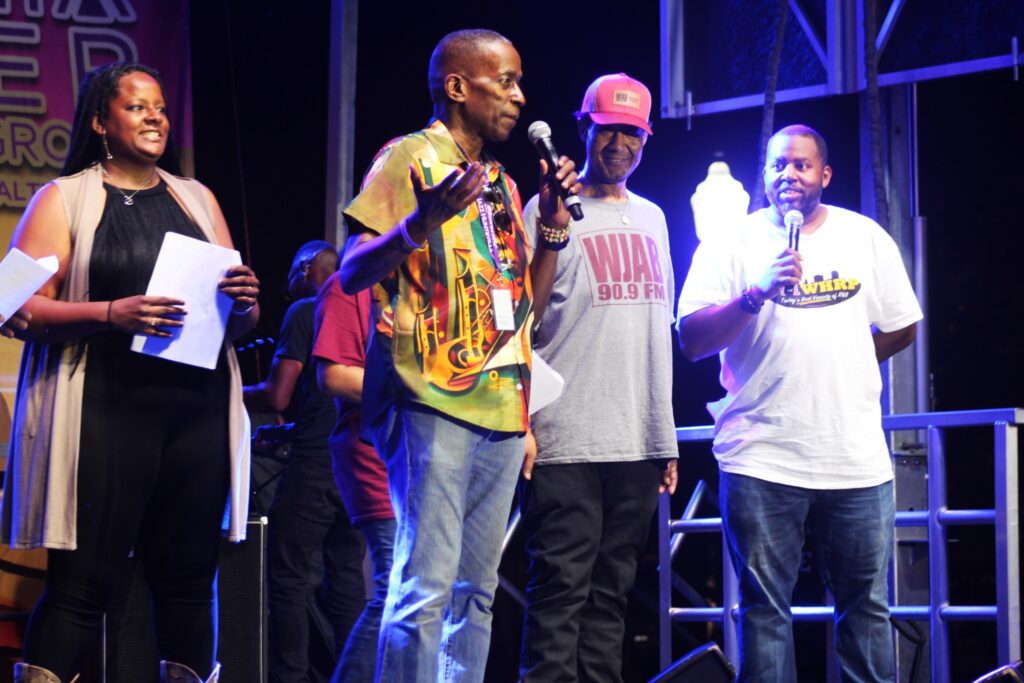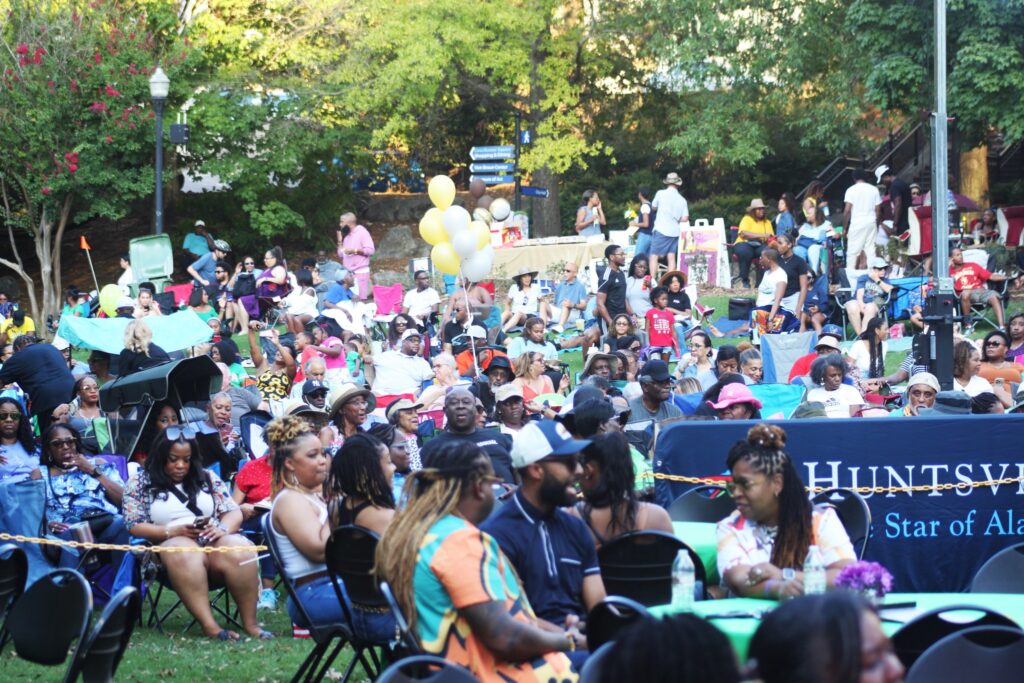
Photo credit: WJAB
The station, hosted by HBCU Alabama A&M University, builds on a history of jazz, gospel, and blues in the area while keeping a commitment to the listeners of a quickly growing city.
Broadcasting from Alabama A&M University, jazz station WJAB 90.9 FM serves as a vibrant cultural bridge between the campus, the quickly growing city of Huntsville, and rural Alabama that surrounds it. It builds on the kind of crossroads of artistic expressions and history you find throughout the American South, often instilling a kind of personal relationship to music. “We lived on a hill, and down in the valley, I could hear music on Saturday nights, just the boom, boom, boom, boom of great music,” remembers Director of Electronic Media Communications Elvin Jenkins. His love for jazz began early. “I thought I was going to be a musician,” he recalls with a chuckle. “But after hearing Miles Davis, I realized, ‘No, it’s not going to happen.’ So I decided to play music on the airwaves instead.” This acknowledgment set him on a path to share the music he loved through radio.
Since joining the station in 2016, he’s overseen and supported the station, preserving jazz’s rich heritage in the area while embracing the future providing a unique musical haven in the region. “I’m passionate about public radio,” Jenkins says, his voice reflecting over two decades in the field. A native of Mississippi, his journey spans North Carolina, Iowa, and Mississippi before leading him to WJAB. “When I first started, I helped develop WPRL at Alcorn State University,” he says. “It was an empty room—I hung sheetrock and did all kinds of things to start that station.”
At WJAB, Jenkins found a station with a solid foundation. “They were offering music, public affairs shows, local news—all those things,” he notes. “My role is to tweak but not change, to enhance those things and make sure we continue.” The station has a commitment to jazz, gospel, R&B, and world music, which it holds onto thanks to its noncommercial nature. “Public radio is an added value to the community it serves,” Jenkins explains. “If we don’t take the time to tell you about Lee Morgan or Bessie Smith, then who will? That’s our mission. That should be our passion.”
For Jenkins, he affirms that the station should set itself apart from commercial radio’s narrow playlists. In an era where commercial stations often overlook jazz, WJAB fills a vital role. “Commercial radio won’t do it—it’s not profitable enough,” Jenkins asserts. “So people seek us out, and our audience is growing because they’re looking for a public radio station.”
- Photo credit: WJAB
- Photo credit: WJAB
Huntsville is the only major city in Alabama that has seen its population grow in recent years, with decades now of rapid growth which has provided both opportunities and challenges. “Huntsville is really growing,” Jenkins observes. “I live in a little rural area outside of Huntsville, but the traffic I have to go through—the people everywhere—our audience is growing too. We are a safe haven for people looking for this type of programming.”
Balancing what people expect with innovation is a delicate dance for Jenkins. “You have to stay true to your roots,” he emphasizes. “I’m in Alabama, the Deep South; you’re going to hear blues, you’re going to hear gospel music—all of those things. So you’ve got to keep that as the foundation. But it’s also our role to expand a little while staying true to that foundation.”
This philosophy extends to engaging younger audiences. “Our audience is getting older, and we have to make some adjustments,” he acknowledges. “But you can’t dismiss that older audience in pursuit of a younger one. That’s the challenge—to keep it fresh but stay within the traditions.” WJAB is making efforts to involve students from Alabama A&M University, one of the country’s Historically Black Colleges and Universities (HBCUs). “We’re making a bigger effort to incorporate students, younger audiences,” Jenkins says. “We’ve got HD radio, so we can do those things.”
Community partnerships also play a significant role in WJAB’s outreach. The station collaborates with organizations, including the likes of the City of Huntsville, to support live jazz in the area. “They bring a Jazz in the Park series to the city every September,” Jenkins shares. “We take part in that. We try to give local musicians opportunities. We make sure that if there’s music out there and it fits what we’re trying to do, we try to get them on the air.”
As Public Radio Music Day approaches, celebrating its fifth year with the theme “Bringing People Together: From Coast to Coast,” WJAB embodies this spirit. The station unites the community through the universal language of music, exemplifying the celebration’s essence. “Public radio listeners, when they move to a new city, the first thing they’re going to do is seek out that public radio station,” Jenkins says. “WJAB strives to be that beacon for jazz enthusiasts and newcomers alike.”
Looking ahead, Jenkins remains committed to his vision for WJAB. “If public radio doesn’t do it, who will?” he asks. “We have to provide that service that, quite frankly, commercial radio won’t.” By harmoniously blending the old with the new, WJAB continues to be a cornerstone in Alabama’s musical landscape. As Jenkins puts it, “You have to be a guide. You can tell people, ‘You like Coltrane, but you may like this too.’ And because of the type of listeners we have, they can appreciate it.”
With a commitment to storytelling and a passion for music, WJAB ensures that jazz not only survives but thrives. The station’s efforts resonate far beyond the airwaves, embodying the true spirit of public radio—bringing people together through shared experiences and the universal language of music.

